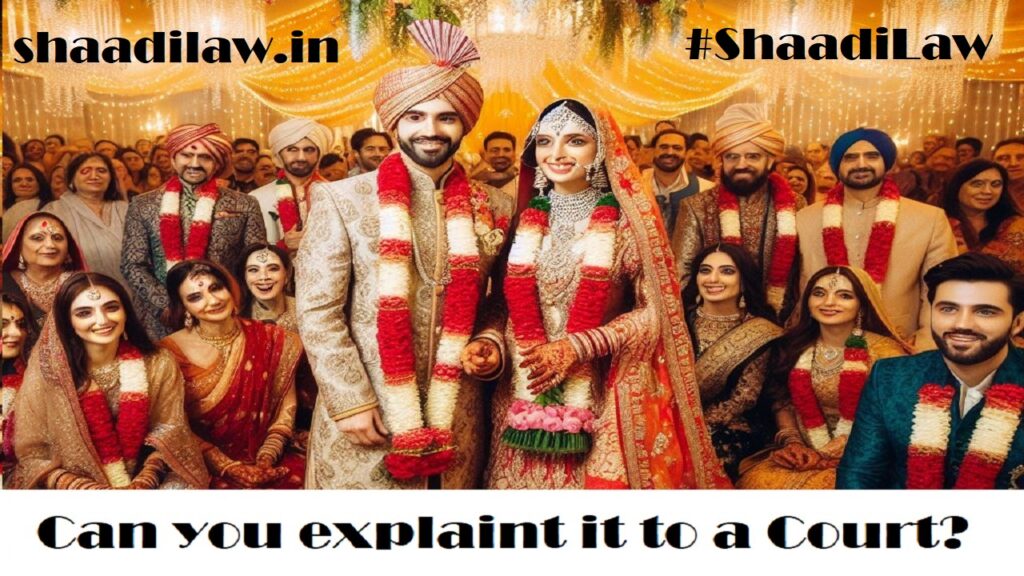Misuse of 498A IPC Recognized by Courts – Small Compilation
This post serves as a compilation of cases in which the courts have acknowledged the misuse of Section 498A by women. Post intends to serve those fighting a false case under section 498A IPC. If there’s anything you believe we’ve overlooked, please don’t hesitate to contribute to this collection. Your input is valuable and will help some innocent soul and his family. And we encourage you to revisit this post, as it will be consistently updated as we come across additional instances like these. (Latest First – Old Last) (The new updates will be added as per their dates) CALCUTTA HIGH COURT (2294308)Before:- Subhendu Samanta, J.C.R.R. No. 2455 of 2018. D/d. 21.8.2023.Swapan Kumar Das @ Swapan Das and Anr. – Petitioners Versus State of West Bengal and Anr. – RespondentsCRR No. 2864 of 2018.Dwaipayan Das – Petitioner Versus State of West Bengal and Anr. – Respondents 21. The legislature has enacted the provision of Section 498A to strike out the dowry meance from the society. But it is observed in several cases that by misusing of said provision new legal terrorism is unleashed. Harassment and torture enumerated in the definition of security under section 498A cannot be proved solely by the de-facto complainant. The criminal law is allowed, complainant to file a criminal complaint but the same has to be justified by adducing cogent evidences. The four corners of both the CDs recorded no such evidence by which prima facie offence against the present petitioners can be established. The direct allegation against the husband by the de-facto complainant is merely from the version of the de-facto complainant herself. It support no documentary or medical evidence. One neighbour has heard about the quarrel of Banshree her husband; the quarrel of two persons does not mean or prove who is in aggression or who is aggrieved. ————————————————————————————– GUJARAT HIGH COURT (2254711)Before:- Sandeep N. Bhatt, J.R/Criminal Misc.Application No. 7061 of 2017. D/d. 22.6.2023.Jyantilal Vadilal Shah & 1 other – Applicants Versus State of Gujarat & 1 other – Respondents 10. At this stage, a mention is required to be made that the current scenario in the society is that Sections of 498A are being rampantly misused by the complainants and in such cases, all the family members are roped in the complaint only with a view to harass the family members and the Hon’ble Apex Court has taken cognizance of such incidents in number of judgments. —————————————————————————————- SUPREME COURT OF INDIA (1941423)Before:-S. Abdul Nazeer and Krishna Murari, JJ.Criminal Appeal No.195 of 2022 (arising out of S.L.P (Crl.) No.6545 of 2020). D/d. 8.2.2022.Kahkashan Kausar @ Sonam & Ors. – Appellants Versus State of Bihar & Ors. – Respondents 18. The above-mentioned decisions clearly demonstrate that this court has at numerous instances expressed concern over the misuse of section 498A IPC and the increased tendency of implicating relatives of the husband in matrimonial disputes, without analysing the long term ramifications of a trial on the complainant as well as the accused. It is further manifest from the said judgments that false implication by way of general omnibus allegations made in the course of matrimonial dispute, if left unchecked would result in misuse of the process of law. Therefore, this court by way of its judgments has warned the courts from proceeding against the relatives and in-laws of the husband when no prima facie case is made out against them. ——————————————————————————————- SUPREME COURT OF INDIA (1141380)Before:-S.A. Bobde and L. Nageswara Rao, JJ.Criminal Appeal No. 1045 of 2018 (Arising Out of SLP (Crl.) No. 3286 of 2016). D/d. 21.8.2018.K . Subba Rao & Ors. Versus The State of Telangana Rep. By Its Secretary, Department of Home And Ors. 5. Criminal proceedings are not normally interdicted by us at the interlocutory stage unless there is an abuse of process of a Court. This Court, at the same time, does not hesitate to interfere to secure the ends of justice. See State of Haryana v. Bhajan Lal, 1991(1) RCR (Criminal) 383 : 1992 Supp. (1) SCC 335. The Courts should be careful in proceeding against the distant relatives in crimes pertaining to matrimonial disputes and dowry deaths. The relatives of the husband should not be roped in on the basis of omnibus allegations unless specific instances of their involvement in the crime are made out. See Kans Raj v. State of Punjab & Ors. 2000(2) RCR (Criminal) 695 : (2000) 5 SCC 207 and Kailash Chandra Agrawal and Anr. v. State of Uttar Pradesh & Ors., 2014(4) RCR (Criminal) 439 : (2014) 16 SCC 551 ————————————————————————————— SUPREME COURT OF INDIA (884166)Before:-Adarsh Kumar Goel and Uday Umesh Lalit, JJ.Criminal Appeal No. 1265 of 2017 (Arising out of Special Leave Petition (Crl.) No. 2013 of 2017). D/d. 27.7.2017.Rajesh Sharma & ors . – Appellants Versua State of U.P. & Anr. – Respondents 14. Section 498A was inserted in the statute with the laudable object of punishing cruelty at the hands of husband or his relatives against a wife particularly when such cruelty had potential to result in suicide or murder of a woman as mentioned in the Statement of Objects and Reasons of the Act 46 of 1983. The expression `cruelty’ in Section 498A covers conduct which may drive the women to commit suicide or cause grave injury (mental or physical) or danger to life or harassment with a view to coerce her to meet unlawful demand.[2]It is a matter of serious concern that large number of cases continue to be filed under Section 498A alleging harassment of married women. We have already referred to some of the statistics from the Crime Records Bureau. This Court had earlier noticed the fact that most of such complaints are filed in the heat of the moment over trivial issues. Many of such complaints are not bona fide. At the time of filing of the complaint, implications and consequences are not visualized. At times such complaints lead to uncalled for harassment not only to the accused but also to the complainant. Uncalled for arrest may ruin the chances of settlement. This Court had earlier observed that a serious review of the provision was warranted[3]. The matter also
Misuse of 498A IPC Recognized by Courts – Small Compilation Read More »






